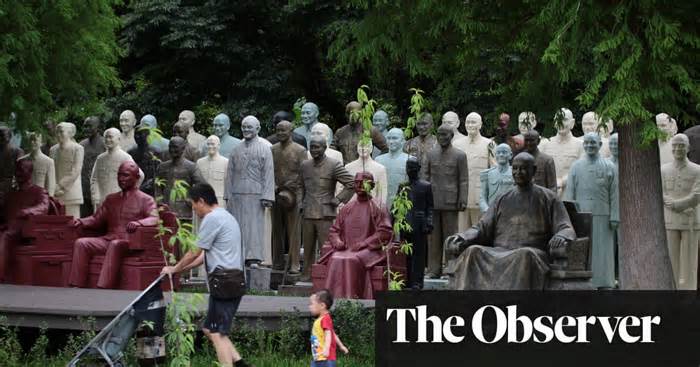Tributes that were removed from public spaces after the end of his brutal rule in 1975 are now encroaching on a site west of Taipei.
The last time Ms. Hsieh visited Cihu Park in Taoyuan was just 50 years ago, at a school next to the tomb of the recently deceased Taiwanese dictator. Busloads of young people were brought in to pay their respects to Chiang Kai-shek, known as the Generalissimo, who died at the age of 87 after decades of ruling the island under brutal martial law.
“There were a lot of buses and a long queue,” Hsieh recalls. “It’s a school rule. We had to bow and then go home. “
Chiang’s body is still there, guarded in a mausoleum at the end of a path that winds through misty bamboos in front of a motionless lake damaged only by a gentle drizzle and a drifting swan. But the other end of the park is the truly ghostly Parte point, dotted with a multitude of statues, almost all of them depicting Chiang.
Some form a circle: an organization of Chiangs gathered for an informal convention or a discussion over a campfire. Elsewhere, dozens of other people are wrapped up in what looks like a Chiang chorus. There’s Chiang on horseback, Chiang in a seat, Chiang reading an e-book or holding a hat. In some, Chiang is surrounded by adoring young people and the hallways are covered with his busts on concrete pedestals. Almost every one of the Chiangs sports his famous smile.
There were no statues here in the 1970s, Hsieh says. Over time, they were moved here, removed from public spaces but not destroyed, forming an honor guard around the mausoleum.
“It’s a place,” Hsieh says. It would be scary at night.
The veneration shown to Chiang when Hsieh was a child is no longer evident. Chiang was the leader of the Republic of China until he and his party, the Kuomintang (KMT), were driven out by the Communists in the Chinese Civil War. Millions of fanatics retreated to Taiwan in 1949, building the Republic of China in exile, and Chiang made plans to retake the mainland one day. During his nearly four-decade rule, now known as the “White Terror,” an estimated 3,000 to 4,000 people were executed and 140,000 imprisoned for genuine or perceived opposition to the KMT.
After his death in 1975, Taiwan transitioned to a democracy, and it is possible to complain about its leaders. But Chiang’s legacy is still hotly debated here.
In 2018, the ruling Democratic Progressive Party (DPP), born out of opposition to martial law, established a transitional justice commission to investigate and atone for KMT movements opposed to the Taiwanese people. In 2022, a grant scheme presented grants of up to 100,000 Taiwan dollars (£2,500) to the local government to replace or remove “authoritarian symbols” and end a “culture of political reverence. “
Taiwan has more than 300 roads named after Chiang, only about 60 schools and dozens of towns, in addition to the Central District of Taipei. Some have replaced their names in the past five years: A road in the former capital, Tainan, is now named after a primary school victim of the February 1947 massacre, when thousands of protesters were killed by KMT troops.
Sign up for Observed
Analysis and reviews of the week’s news and culture from the Observer’s most sensible writers.
After the Newsletter
Last week, a PDP lawmaker questioned the government about the slow progress on the more than 700 statues still standing, saying it should be more proactive in encouraging the use of subsidies. Chief Cabinet Chief Shih Pu said one component of the challenge was that many of the statues were on army sites, that they did not need to be removed.
The popular KMT party, now in opposition, has apologized for its broader moves but opposes the PDP’s transitional justice efforts, which it says amount to a political witch hunt. Some members have rejected the proposal to remove Chiang’s largest statue, a six-metre-tall sculpture. in central Taipei, until the destruction of the Buddhas of Bamiyan by the Taliban in 2001.
Opinions in the country are divided but nuanced. Prominent activist Lin Li-cai, whose father was a victim of the massacres, told the Observer that his circle of relatives would “set off firecrackers” if the statue was removed from Taipei. But some say Chiang’s crimes will have to be weighed against the economic boom that marked the beginning and his fight against the Japanese and the Communists.
“Chiang has done a lot of questionable things,” said Mr. Chiang. Huang, a guest at the park. But he also made his contribution. If he hadn’t come to Taiwan then, the country would now be ruled by communists, and the maximum number of Taiwanese would not need to be ruled by Xi Jinping. “
Hsieh says there’s no point in erasing history and that the statues appear to be in the same condition as in schools. Besides, he adds with a laugh, Cihu Park is quite scary. That’s all it takes.

